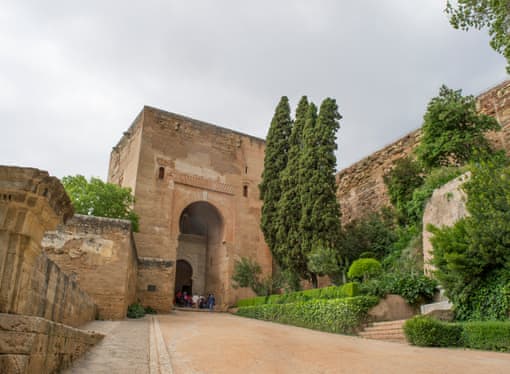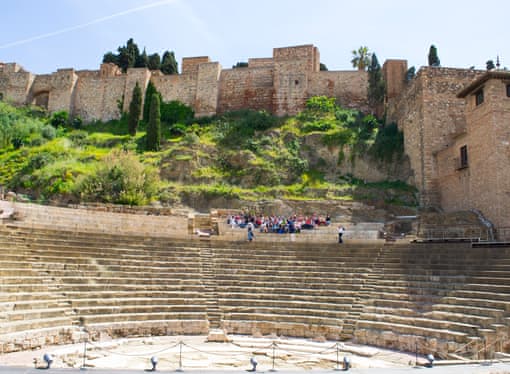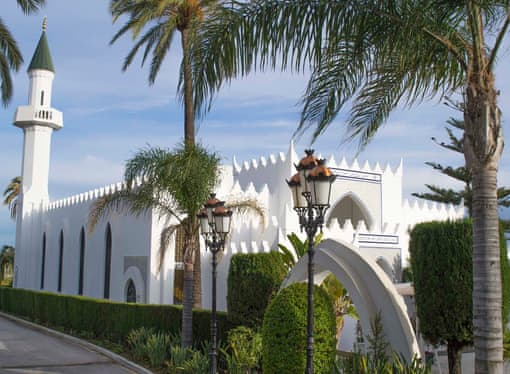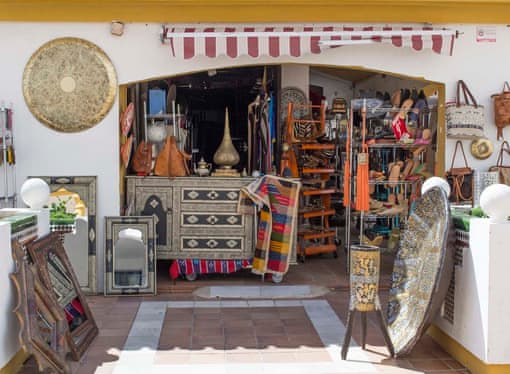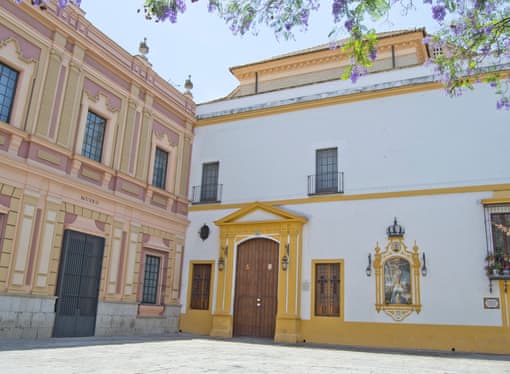









Andalusia Halal-friendly holidays general information
Halalbooking guide for halal-friendly holidays in Andalusia
Spain is one of Halalbooking’s most popular European destinations. Its tourism industry has made positive steps towards attracting Muslim tourists, which are showing encouraging results. It boasts a number of ‘dry’ hotels, which are completely alcohol-free and is welcoming to Muslim visitors. There is a significant Muslim population living in the Andalusia region of Spain, which means that it is relatively easy to find halal restaurants and shops selling halal food. Andalusia also has a rich Islamic heritage based on its Moorish history.
Spain’s official tourist office website provides some useful information for Muslims planning to visit Andalusia on a halal-friendly holiday or for more information check our guide to halal holidays in Spain.
Where does the name Andalusia come from?
Andalusia comes from the Arabic Al-Andalus. The name was first used on bilingual gold coins minted in 716 in Spain by the region’s Muslim rulers. The term was adopted into Spanish around the 13th century, referring to the territories under Moorish or Muslim rule.
Why is Andalusia an important destination for Muslims?
Spain’s Andalusia region was under Muslim or Moorish rule for the period from 711-1492. The Umayyad Caliphate ruled the area from 756 until the beginning of the 11th century and oversaw a golden age for education, the arts and architecture. Many fascinating remnants of this period still remain today attracting Muslims from all around the world to discover their Spanish Islamic heritage.
Wheather in Andalusia
Andalusia is the hottest area of Europe making it perfect for sun-seekers. Its capital, Seville, has the highest average annual temperature in mainland Europe. Both Seville and Cordoba reach an average temperature of over 36 degrees Celsius in the height of summer.
Where is Andalusia? How to get there?
Andalusia is a region in the south of Spain’s Iberian Peninsula. It has both Atlantic and Mediterranean coastlines, with a mountainous interior and is home to some of Spain’s best-known historic cities such as Granada, Cordoba and Seville, which is its capital. It is also the location for many of Spain’s best beaches and the renowned resorts of the Costa del Sol, such as Torremolinos and Malaga.
How to get to Andalusia
Spain’s Andalusia region is extremely well served by international flights from many destinations, with three airports: Seville Airport, Granada Airport and Malaga Costa del Sol airport. Malaga airport has a multi-faith prayer room in the arrivals hall of terminal T3 where Muslims are welcome to pray.
Top destinations to visit in Andalusia
Granada
The atmospheric city of Granada is one of our top tips for a halal-friendly holiday destination. The so-called Arab Quarter of Albaicin or Albayzin is a charming maze of whitewashed buildings and cobbled streets. It is still an area with a significant Muslim population, so it’s a good place to find halal restaurants and shops selling halal food. It is also the location for the Mezquite Mayor de Granada, otherwise known as the Great Mosque of Granada. The gardens of the mosque are the perfect place from which to survey the beautiful Alhambra Palace, which is one of Granada’s main attractions. The mosque usually provides meals after Jummah, which is a great way to meet the locals. The Alhambra, the stunning hilltop palace, which was the royal residence of the Nasrid Kings, is Granada’s biggest attraction and a superb example of Moorish architecture.Cordoba
Cordoba is another of Andalusia’s great historic cities and is the setting for one of the most impressive architectural masterpieces created by the Muslim rulers of the region – the Great Mosque of Cordoba, known locally as the Mezquita-Catedral de Cordoba, which was built as a mosque and is in use today as a consecrated cathedral. Just outside Cordoba is the ancient city of Medinat Al Zahra, which is also well worth a visit, for those interested in the region’s Islamic history.Costa del Sol
This area of Spain’s Mediterranean coast is at the heart of its tourist industry and its beach resorts such as Malaga and Torremolinos are some of Europe’s best known holiday destinations. Recently, it has also been welcoming Muslim tourists to its halal hotels such as the Alanda Hotel in Marbella and the Costa del Sol Hotel in Torremolinos, both of which are alcohol-free hotels and serve halal food. They are a great choice for those who want to enjoy the sunshine and explore Andalusia’s Islamic heritage at the same time.Seville
Seville is the capital of Andalusia and has the distinction of being one of the sunniest cities in mainland Europe. It is, of course, famous for its oranges as well as for its grand Moorish architecture and splendid Islamic sites. Don’t forget to visit the Giralda, originally built in the 12th century as the minaret of the mosque. It now serves as the bell-tower of the cathedral. Even after Islamic rule ended in Andalusia, its architectural styles still continued to influence local buildings. Nowhere is this more evident than in the Alcazar of Seville with its Palacio de Don Pedro, built for a Christian King in the Nasrid style. You should also make sure to visit the Plaza de Espana and Torre del Oro.Cadiz
The port city of Cadiz is one of the oldest cities in western Europe and has been continuously inhabited for over 3000 years. It is less touristy than many other cities in Andalusia, but no less charming. Visit the historic fortress of Castillo San Sebastian, which is linked to the sea by a tidal causeway, the 18th century watchtower, Torre Tavira, and the Baroque Cathedral Nueva.
Where to stay for a halal-friendly holiday in Andalusia?
Halalbooking offers a good choice of halal-friendly hotels on the Costa del Sol, some of which offer the option to stay in an alcohol-free environment and also serve halal food. Families may prefer to consider a halal-friendly villa for the freedom of self-catering. Private fully-secluded pools offer complete privacy for Muslim families.
Halal food and restaurants in Andalusia
Negotiating Spanish cuisine can be tricky for Muslims. Not only is it heavy on pork, but there is no real tradition of vegetarianism, so it is common for meat to be added to sauces or salads. It is, therefore, very important to check everything rather than to assume. Make sure you learn a few Spanish phrases such as “sin jamon” or “without ham”.
For more general information on finding halal food in Spain, see Halalbooking’s guide to halal holidays in Spain.
The cuisine of Andalusia relies heavily on fish and seafood, so this can be a good option for Muslims. Fish such as bass, benito, sword fish and blue fin tuna is commonly caught in the region, depending on the season. Many dishes also feature salted cod. Each area has its own specialities, for example Huelva is famous for its prawns and Malaga is known for its sardines and fried anchovies. Cadiz is the place to try fried shrimp cakes, made with wheat flour and chickpeas, or the cones of fried fish, which are sold on the streets around the harbour.
Some tapas dishes are vegetarian, which is a good option for Muslims who are concerned about the availability of halal meat.
Top vegetarian or fish dishes suitable for Muslim tourists in Andalusia:
White garlic gazpacho – a traditional cold soup of the Andalusian region made from bean flour, potatoes, garlic and olive oil
Patatas bravas - traditional, fried potatoes
Berenjenas con miel – a speciality of the Andalusian town of Malaga which is aubergine fried in honey or molasses
Andrajo with salted cod – an Andalusian soup made with pepper, tomatoes, onions, clams and salted cod, flavoured with local spices and herbs
Alfajores – a sweet treat from Seville made from flour, honey and almonds and flavoured with cinnamon and lemon peel
Garbanzos con espinacas – chickpea and spinach stew
Tortilla de patata – Spanish omelette made with egg, potatoes and onions
Another option is to consider restaurants serving different types of cuisine, such as Turkish or Middle-Eastern for halal döner kebab, Indian or Pakistani restaurants for halal chicken or Italian restaurants for vegetarian pasta and pizza.
It is worth noting that some halal restaurants in Spain do also serve non-halal dishes, and may also serve alcohol. Check review websites and ask if you’re not sure. An interesting local restaurant is Noor in Cordoba, whose Michelin-starred chef Paco Morales, is renowned for having created a form of halal haute cuisine. His dishes are based on the traditional cuisine during the Islamic rule of Al Andalus. Meals can be accompanied by non-alcoholic cocktails or delicious teas, but the restaurant does also serve alcohol. Also in Cordoba, in the hills overlooking the town, is the restaurant Los Almendros, which has halal certification and its own prayer room. It serves traditional Spanish food.
The Islamic Heritage of Andalusia
The Spanish region of Andalusia first came under Muslim rule in 711, when the Iberian peninsula was conquered. It had previously been under the harsh rule of the Visigoths, so the local population put up little resistance to the relatively generous terms of surrender which were offered. In 756, Amir Abd al Rahman founded the Umayyad Emirate of Cordoba pulling together all of the local Muslim rulers under one dynasty, which subsequently became the Umayyad Caliphate. This period of the Caliphate of Cordoba, from 929-1031 became a golden age of education, when libraries and colleges thrived. Cordoba was, at this time, the largest city in Europe, and became one of the leading cultural centres of the world. It was a period where major advances were made in mathematics, science and medicine and when literature and poetry flourished. Al Andalus also acted as a bridge between the Islamic and Christian worlds. Jews and Christians lived in relative freedom and were able to worship freely and work alongside their Muslim rulers.
Top 5 Islamic sites for Muslims to visit in Andalusia
The Alhambra in Granada
The Alhambra in Granada was originally constructed as a fortress and later completely renovated as a grand fortified palace in the 13th century by the Nasrid ruler Mohammed ben Al-Ahmar. It later became the royal palace of Yusuf I Sultan of Granada in 1333 and subsequently became the court of Ferdinand and Isabella, after the end of Muslim rule. It is a magnificent sight, and one of the best known attractions in the region. For the best views over the Alhambra, visit the gardens of the Great Mosque of Granada.The Mezquita-Catedral de Cordoba
The Great Mosque of Cordoba is widely recognised to be one of the world’s greatest works of Islamic architecture. It was built on the site of a Roman temple in 785, by the Umayyad ruler Abd Ar-Rahman. It was later enlarged in the 9th and 10th centuries, making it one of the largest buildings in the Islamic world, occupying a site of some 180 x 130 metres. Its architecture is truly magnificent. The entrance is via a beautiful courtyard full of orange trees, palms and cypress trees. The roof of its impressive hypostyle prayer hall is supported by over 800 pillars of many-coloured marble, which are elaborately decorated. Some of the pillars came from Roman sites, and even from as far afield as Constantinople. Its mihrab is of especially intricate and beautiful design, surrounded by opulent mosaics and its dazzling dome is also covered in gold mosaics. Since 1236 it has served as a Catholic cathedral, with various alterations made to its interior. Its minaret was turned into a bell tower. Today, Muslims are not permitted to pray here.The Alcazar in Seville
The Alcazar in Seville was originally built as a fortress, and is still in use as a royal palace today. It is a spectacular example of Mudejar architecture, which although it was built for a Christian king, builds on the great traditions of Islamic architecture. At its heart is the Palacio de Don Pedro, who when he decided to build his new palace in 1364, called upon his friend the Muslim Emir of Granada, Mohammed V for advice. He sent his top craftsmen to work on the project, many of whom had been involved in his work on the Alhambra.The Madinat Al Zahra or Caliphate City of Medina
The Madinat Al Zahra has recently been designated as a UNESCO World Heritage Site. The site of the ancient city lies approximately 7kms from Cordoba and is Spain’s largest archaeological site. In 936 Abderrahman III decided to build an administrative capital here, which was only in use for a relatively short period until 1010. Its name literally means ‘the shining city’ and at the time it was said to be one of the most beautiful cities in the world.The Giralda in Seville
The Giralda was originally built as the minaret of the Great Mosque of Seville, during the reign of the Almohad dynasty. It is of an unusual, square construction built from local brick and recycled marble and originally reached to a height of 51 metres. It was later turned into the bell tower of Seville Cathedral and further constructions were added to make it a height of 98.5 metres.
By registering I accept Halalbooking’s Terms of Use and Privacy & Cookie Policies.







